FujiFilm X-E1 vs Leica M9
Let me start off by saying that I’m a FujiFilm user, I’m good friends with FujiFilm and I’ve been using all their cameras and own a FujiFilm X-E1. However I also own a Leica R4 with some lenses and I love that camera for analogue, and am also connecting those lenses to my X-E1 and soon Sony A99. In my reviews I however always try to take a 100% neutral view on the products so I have to start by saying that there was NO preference what so ever to start with and the review is 100% my honest opinion.
Of course some people will say that you need at least some weeks of experience with a rangefinder before being able to do a comparison, I agree and disagree. Over the years I’ve shot with a lot of different cameras ranging from the Zeiss folding cameras with zonefocus only, Lomo, 35mm ranging from all manual to full auto (ended up with the R4 from Leica and Mamiya 1000S), Medium format and even some box cameras. With digital the list is even longer including all FujiFilm cameras and at the moment I still use the Mamiya RZ67ProII with digital/film back on a regular basis, so I think I can pretty quickly adjust to a new camera and I’m used to doing stuff manually (especially focus). Truth being told a camera can grow on you, the remarks you read in this review are based on the experience I have with different cameras and the way the M9 felt in my hands. On the subject of pictures I can be very very short, they were shot during a small photowalk in Rotterdam lasting less than 1 hour because the time I had with the camera was limited I decided to first get familiar with the camera in the studio and at home and shoot some quick comparison shots during our trip to Rotterdam. Most of the review is based on the 2 days getting familiar with the camera, but I don’t want to bore you with my personal shots of my wife and son 🙂
For some time now people have been asking me “which camera should I buy, should I buy the Leica or the FujiFilm”, I always said “get the FujiFilm” for the simple reason you can buy 6-7 X-E1’s for the price of 1 Leica, and the same goes for the lenses, if your budget is unlimited that’s another story of course, but most people have to keep within a budget and with the prices of the Fuji lenses compared to the Leica lenses… well let’s say you can buy a nice collection of Fuji glass for the price of one Leica lens. But because I always want to be complete in my advise and I never shot with a digital Leica before I decided it was time to test the M9 during a small photo walk and compare the two, swap lenses etc. I only could use the Leica in the field on one day due to the limited time I could borrow the camera, but I think when reading this you will get a good idea of what the differences are. I would love to use the system a while longer and with more lenses but for now this will have to do, as mentioned in the intro I did get familiar with the camera at home before testing it in the “field”.
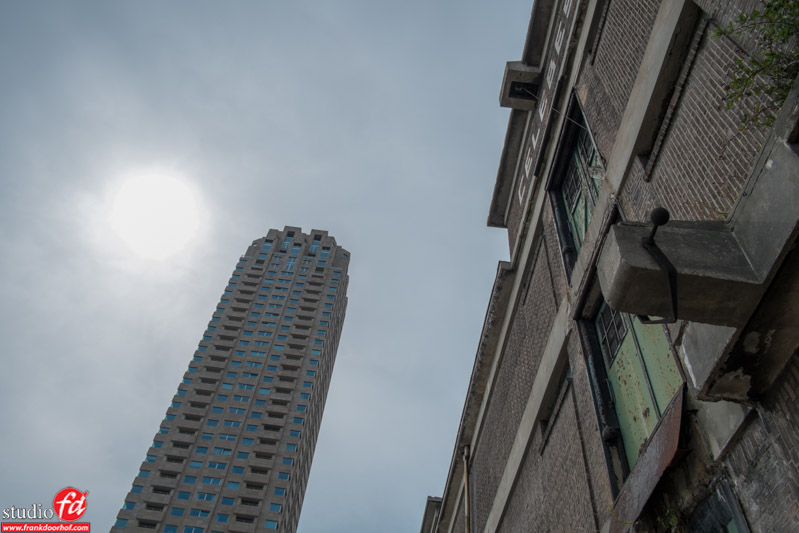

Dynamic range difference between the Fuji X-E1 (top) and Leica M9 (bottom) both shot under same condition, both with a little bit of help in Lightroom
Let me start by saying that the Leica M9 is drop dead gorgeous, it’s heavy and build like a tank… but that said I think the X-E1 with silver top and leather case wins this first round, and ok when you hold the Leica you feel a lot of weight and again it looks sexy, but the FujiFilm is great to travel with when you have to take care of weight and for me it just looks better due to the silver top (I borrowed a black M9). However looks are 100% unimportant of course, it’s all about getting the shot, and that’s where I think the difference lies.
With the test I used the 18mm on the FujiFilm X-E1 on which I have to add that this is actually my least favorite lens in sharpness and look, and the 35mm on the M9. I wanted to go wide for this test so this is where the test was based on (also because the M9 was only available for the review with the 35mm lens) I would have preferred to compare the 35mm to the 50mm to be honest.
Focussing
To get a good shot we need a few things.
1. A good scene : well this is equal for all cameras
2. The right moment : also this is equal for all cameras
3. The shot : here is where the photographer and camera go into a cooperation that has to work
My shooting experience with the Leica is a real love/hate one. Focussing is a matter of getting used to but it’s slow, much slower than for example my R4 and even with focus peaking and manual the X-E1 is faster. It’s a matter off getting a square in the middle of the frame line up with what you see in the whole frame, the reason for this is that with a rangefinder like camera you actually don’t see what the lens sees, so there has to be another form of focussing and to be honest this sounds easy right… and it is, in fact as soon as you get used to it it’s very fast and accurate…… however try to do it when there is VERY much detail, on some scenes I was literally giving up and first aimed at something that had a recognizable pattern to get in the ballpark and then back to the “chaos” to line everything up, after an hour or so this technique became almost second nature and when you “get” it, focussing is very accurate and relatively fast. Especially the accuracy is something that surprised me, the first time I used the technique I thought “this can never result in razor sharp images wide open” well that was wrong, when you get it right, it’s right, I’ve shot with cameras using this kind of focussing that were MUCH worse.
Shooting with the X-E1 is a different experience (especially) after the firmware updates, FujiFilm does it every time, the speed and accuracy of the lenses and camera are improving with every single firmware update, at the moment it’s a system that focusses very quickly and very accurately, on the street I found myself looking for focus with the M9, often pre focussing on distance and hoping it would work, and therefore often missing a shot. With the X-E1 you point press through (if needed) and the camera shoots and in the majority of the cases where you shoot from the hip or very fast the focus is death on. When you take the time and focus and press it’s 99.9% accurate on the street. The main difference for me between shooting with the M9 and X-E1 was that with the M9 I always had to put the camera on smaller apertures (higher ISO) and “guess” the distance when shooting from the hip and after that…. hope. With the X-E1 you actually don’t think you just press and the camera does the rest. Now some people will say “yeah but that’s not photography” well I can be quick with that… whatever gets me the shot, and sometimes you just can’t put the camera to your eye and draw attention to yourself, so shooting from the hip in those cases becomes a necessity.
To compare both cameras I also put the X-E1 on manual focus, working with an EVF is of course 100% different than working with an OVF/rangefinder, but for me also in a positive way, indeed the feel you get when looking through the viewfinder of the M9 is one of “WOW GORGOUS”, the X-E1 looks a bit disappointing after that, but having said that with the new focuspeaking option in the new firmware setting focus is very fast on the X-E1 compared to the M9, I would say at least twice as fast on normal scenes, and if you have time just press the dial and it zooms in to the center so you can really get the focus spot on, press the shutter and voila perfectly focussed images. Now I agree that when you work with the Leica for a few weeks or months/years the focussing will probably become second nature but I have to say that in most scenes I did have a lot of trouble to find out where my detail in the focussing square belonged and that figuring out slowed me down considerably I much more prefer a viewfinder where everything is out of focus and you focus the SLR way (like the Leica R4), but as you all know that’s not the way the M series work, so also not how the digital one works. I can agree with the purists on the fact that Leica kept it this way, on the other hand I also believe that time goes on and techniques improve, there must be some way to get the focus system working more easily with digital techniques, it now seems a bit that Leica has very much tried to keep the M “experience” as much as possible in tact and not go all the way digital, again I agree with it for that feel of the old vs the new, but I would have loved to see some more focus help in the camera, maybe via an extra option so you can choose to switch it on or off.
The main difference/problem (when we look at the system) is for me is that there is no option for live view with peaking, no option for AutoFocus (and yeah I know that is the heritage but still) with the M9, with the X-E1 you can opt for manual focus, peaking, zooming and of course fast and accurate AF. What also did irritate me with the M9 was the fact that I constantly saw the sun hood in the corner of my frame. Making the X-E1 a more versatile system, when I want full auto I can choose it, but when I want to shoot with manual I also can do that. The only “problem” some people will have is the EVF vs the OVF, for those people I would advise to check out the X-Pro which does have an OVF, for me I found that I hardly used the OVF and that’s why I opted for the X-E1. I have to add that the experience with the X-Pro1 compared to the M9 I do like the viewfinder from the Leica a LOT more including the manual focussing, on the X-Pro1 I always opted for the EVF because the focussing with the OVF (even after a few weeks) just wasn’t my thing, as soon as you understood the viewfinder it was accurate but just not my cup of tea so to speak.
Noise
One of the most important tests is noise at higher ISO, I’ve read some review in which the Leica was labeled unusable above ISO400 (older type Leica) well the M9 is very nice and handles noise pretty well up till ISO2500 (max ISO) for prints, BUT…….. the Fuji wins HANDSDOWN and I mean with a WIDE margin. So if you find yourself on ISO1600 or higher on a lot of shoots the X-E1 will beat the Leica with ease. I’ve actually have some A2 prints made with the X-E1 on ISO6400 in daylight that look pretty good without even touching the noise kill slider in Lightroom.
The look of the images, because that’s where it’s all about.
According to many there is some Leica magic in the look of the images, and let me start by saying that I agree that lenses are very very important for the look of a system, on my A99 I use a lot of different lenses from Minolta to old Zeiss and modern Zeiss glass and some really old funky M42 lenses, and trust me they all have their look, that remark “Minolta colors…” yep that’s 100% true and I love the look. So is there some Leica magic?
The Leica M9 has a certain look, it’s a bit more 3D than the FujiFilm X-E1 but not much, what’s weird is that in some skies the X-E1 gives me a standard/correct blue sky where the M9 gives a sort of red glow in the sky, it’s very faint but it’s there. Also the whitebalance is different, the Fujifilm X-E1 gives me very accurate colors (although sometimes a bit towards the blue side) but compared to the M9 it’s more accurate, which is of course COULD be due to the lenses, however.. it is a rather big difference, which actually makes it clear it’s not the lens (lenses will never add that much difference), plus when I connect the lens to the FujiFilm X-E1 with the M convertor that “big” color difference is gone, it’s still there a little bit (like every lens is a bit different from the other) but the big difference is gone.
This means that the M9 is actually creating the look, now one can argue if that is a good thing or a bad thing, I have to be honest I would rather have more accurate colors and later in Lightroom add some toning, on the other hand you can always correct the M9 images. On the X-E1 it seemed like the 35mm Leica lens performed slightly better than on the M9 itself (probably due to the sensor design of the FujiFilm that in my opinion is in a league of their own). The 3D look on the M9 was better, but this is also due to the bigger sensor, it’s the same difference I saw when switching from a 20D to 5D a long time ago and it’s often hard to explain to people because both sensor and lens are debit to this effect (number 1 is light of course), but it’s just something that I see in a shot. I have to add that I did not yet test the new Zeiss lenses on the X-E1 but knowing my experience with Zeiss on the Sony I know for sure that this 3D pop will also be in the Zeiss lenses. Most of the 3D look is hardly ever explained online because in my opinion it’s something that’s very hard to explain, some claim it’s micro-contrast but I’ve some very old glass that has an incredible 3D look them but trust me when I say that they hardly have any contrast so I think it’s something else although I can’t tell you what it is exactly, I normally will shoot with a lens and if that effect is there it will show itself pretty quickly, over the years I’ve started collecting lenses that in my opinion have that special look and I have to add the Leica glass without a doubt has some of that magic. At the moment I’m using Leica R lenses on the FujiFilm camera and will try to upload some samples in a few weeks.
For the review I left BOTH cameras on AWB and did NO corrections in the RAW conversion.
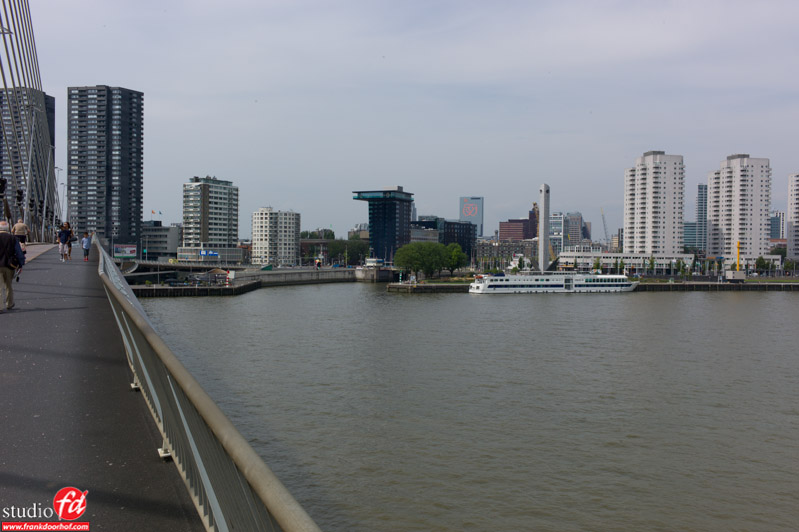
A clear reddish tint is seen in the sky with the Leica, it’s not the difference in Whitebalance but it’s seen in the right upper corner.
Sharpness is good on both cameras, on some shots I like the look of the X-E1 more, on some shots the Leica M9. The Leica creates a very detailed image with a more “soft” look which I really like, and don’t get me wrong, the soft look is not meant as NOT sharp, it’s more of between very sharp but not too “digital/hard”, the X-E1 has a VERY sharp picture but sometimes can be a bit harsher than the Leica. It’s a very personal choice on which you like and I wonder if a lot of people will see the difference. Due to my background in calibration/Home Theater (ISF) I’m very sensitive for this look, same for the slight color difference by the way. For portraits I like the Leica a bit more, for city and street shots I actually prefer the X-E1.

Leica 35mm on the FujiFilm X-E1 love this look and the lens is razor sharp with beautiful colors, actually I like it much more on the X-E1 than on the M9
Conclusion
If they were both the same price I would probably think about the M9, but the lack of autofocus on the lenses would really hold me back, but I could live with it due to the fun you have while shooting the camera and the gorgeous viewfinder, it’s a challenge, it’s a camera that makes you work. I can compare it to shooting with the RZ67ProII, when I want quick accurate results I will take the A99 or the Phase One DF with Leaf Credo, but if I have time and I just want that “WOW” experience I will take out the RZ67ProII and yeah I will miss more shots and it’s a lot slower but man is it fun to shoot. However… I’m afraid that after that “fun” part is gone I will go back to the FujiFilm very quickly for the following reasons:
Now when we know that most people will use the Leica on the street and that you need some speed there I think that the Leica is a great/sexy/cool and awesome to shoot with camera BUT… due to the lack of focussing speed it’s not the camera I would advise, even if it was the same price…….. However seeing the fact I can buy 6x X-E1’s for one M9 (and I don’t even talk about glass)… well I will advise the X-E1 without a doubt in my mind. Also take into account the dynamic range in the X-E1 and the much better handling of noise I’m more and more convinced the Leica is not the better choice.

FujiFilm X-E1, main difference is the FF vs Crop in DOF but also watch the different rendering in reds, also here the FujiFilm actually is more accurate.
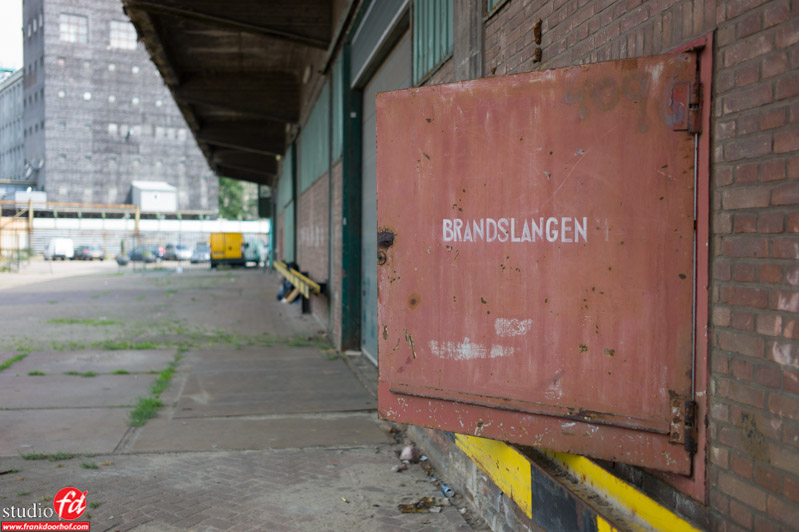
Leica M9, although not accurate the reds in this shot are slightly more appealing, although the yellows and greens are not accurate from what I saw.
So did I like the Leica digital experience
Well I’m in doubt.
Shooting it was fun, working the focus is fun, the focus “holder” on the lens is an idea that more manual lenses should have, the viewfinder is fun and (call me a geek) I love the sound the camera makes after taking a shot (sounds like a film roll forwarding) but when I spend 5000+ on a camera I expect certain things and during the review the camera did not boot several times, meaning I missed shots, I had to turn it off and on a few times and it worked again, this is of course unacceptable in a camera in this price range, the sunhood in the frame was something that annoyed the heck out of me after 1 hour and that feeling did not go away. The square in the middle to align the focus also disappeared on me a few times maybe I got my hand in the wrong place but it was gone, also the fact that you don’t look through the lens got me some images on the street which I’m still trying to figure out what was in front of my lens, the viewfinder showed everything perfectly but there was something in front of the lens and that made me miss the shot, of course it’s the way a RangeFinder works… but again it did cost me my shot.
I really wanted to LOVE the Leica because I really like the R4. But I found that every time I took out the X-E1 I was a bit disappointed that I missed the viewfinder of the M9 but as soon as I started shooting everything was forgotten because I simply got the shots I needed. Back home looking at the files there is a difference between the cameras without a doubt, and if ALL was equal I would prefer the M9 probably due to the slightly more 3D look but all is not equal and I cannot say anything else than that although I love Leica I’m afraid that I will never buy one for that kind of money. I have to dive more into the Leica glass and will do that with my own R lenses but for the moment I think the best option is to mount some Leica glass on the X-E1 if you really love the glass and you will probably be much better off and have the best of both worlds, because the Leica glass really has it’s own look just like Minolta and Zeiss glass (which I really love).
The M9 would be the perfect choice for people who own a lot of Leica glass is one of the reasons I hear from people buying the Leica, however with the convertors to mount different lenses on different cameras I think this reason is not valid anymore, the sensor in the FujiFilm cameras is a little piece of magic with incredible detail and sharpness and will without a doubt squeeze every bit of sharpness and depth out of the best lenses, the only REAL difference is the crop vs Full Frame factor, and to be honest that’s not worth that kind of money. The M9 is build like a tank, has strong connections with the past and feels awesome but…. I think it’s way overpriced for what it delivers. Although I do love the slightly more 3d look in the final images.

Leica M9 straight out of the camera, look for the reddish tint on the left upper side. But also the slightly more 3D look.
Boring lens test
Of course you also want to see a few more boring shots right?
So here we go.
What really got my attention was the difference in WhiteBalance between the two cameras, the FujiFilm is slightly too cold in this shot, but pretty accurate, the Leica however is WAY to “golden”.
 Now what would happen when we switch the lens?
Now what would happen when we switch the lens?
The following images were taken with the FujiFilm M convertor and the 35mm on the FujiFilm X-E1 camera.
As you can see there is a difference in color rendering which I actually prefer above the 18mm Fuji lens but the colors are more accurate although also here there is a bit too much red in the picture compared to the real situation.
And for the pixelpeepers some 100% crops:
All crops are straight out of the camera without any sharpening.
 100% Leica crop wide open 35mm
100% Leica crop wide open 35mm
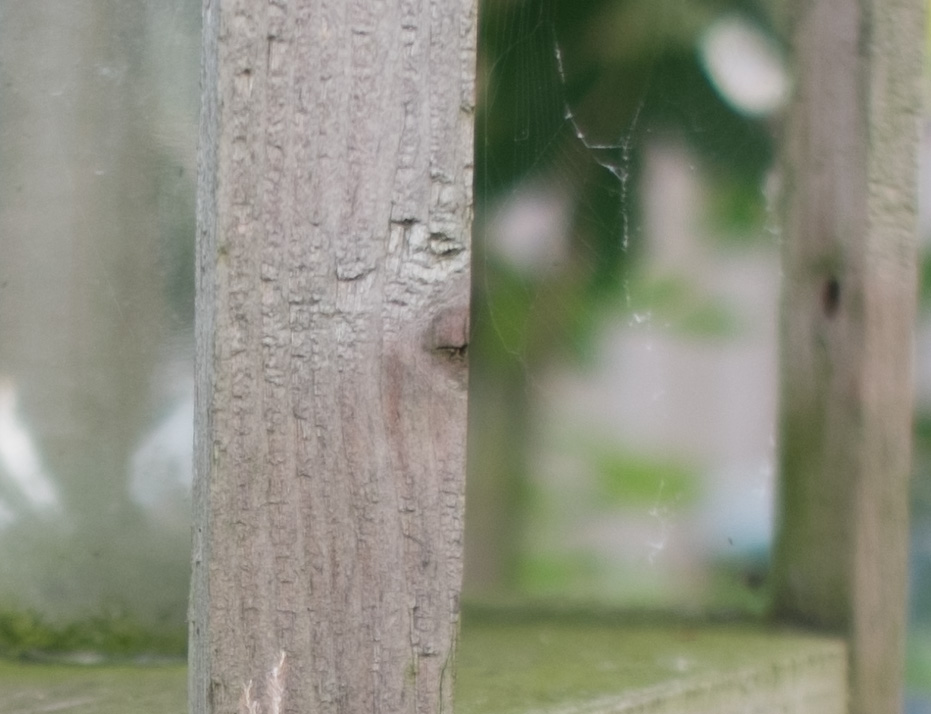 100% FujiFilm X-E1 crop 18mm wide open (again this is the least sharp lens I own on the FujiFilm X-E1)
100% FujiFilm X-E1 crop 18mm wide open (again this is the least sharp lens I own on the FujiFilm X-E1)
FujiFilm X-E1 with Leica 35mm wide open.
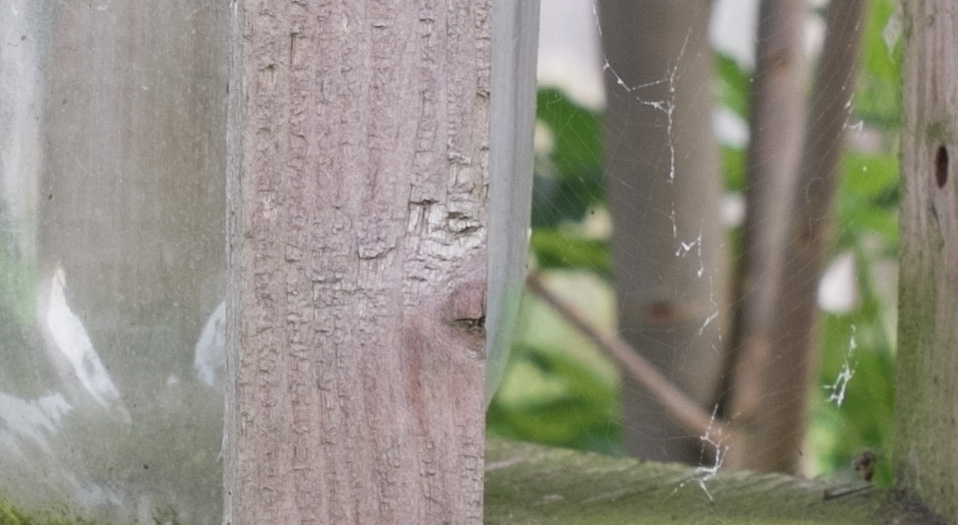 FujiFilm X-E1 with Leica 35mm on F8.
FujiFilm X-E1 with Leica 35mm on F8.




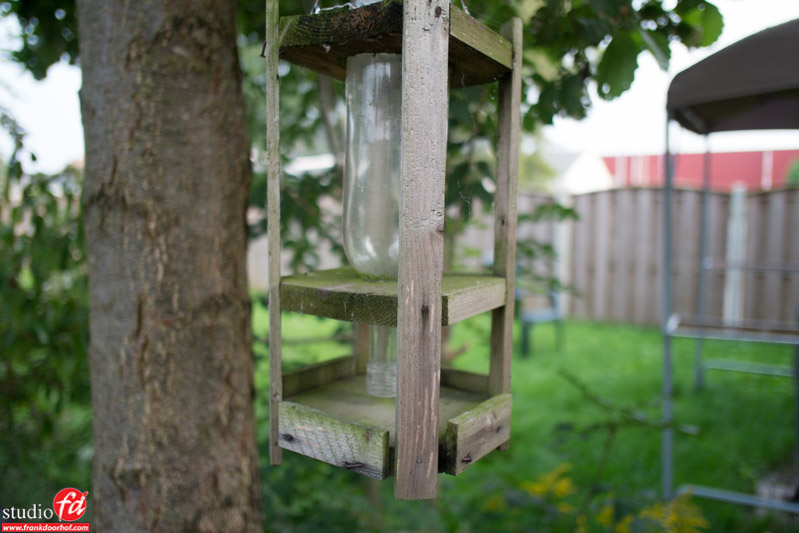

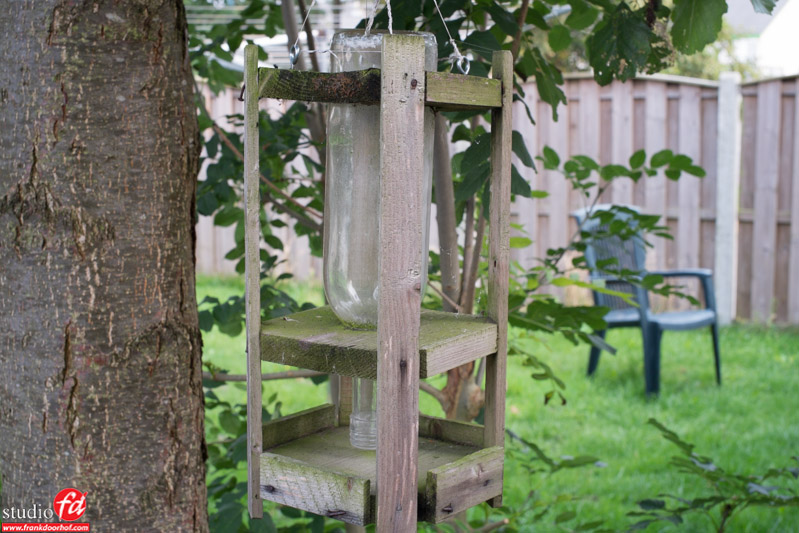
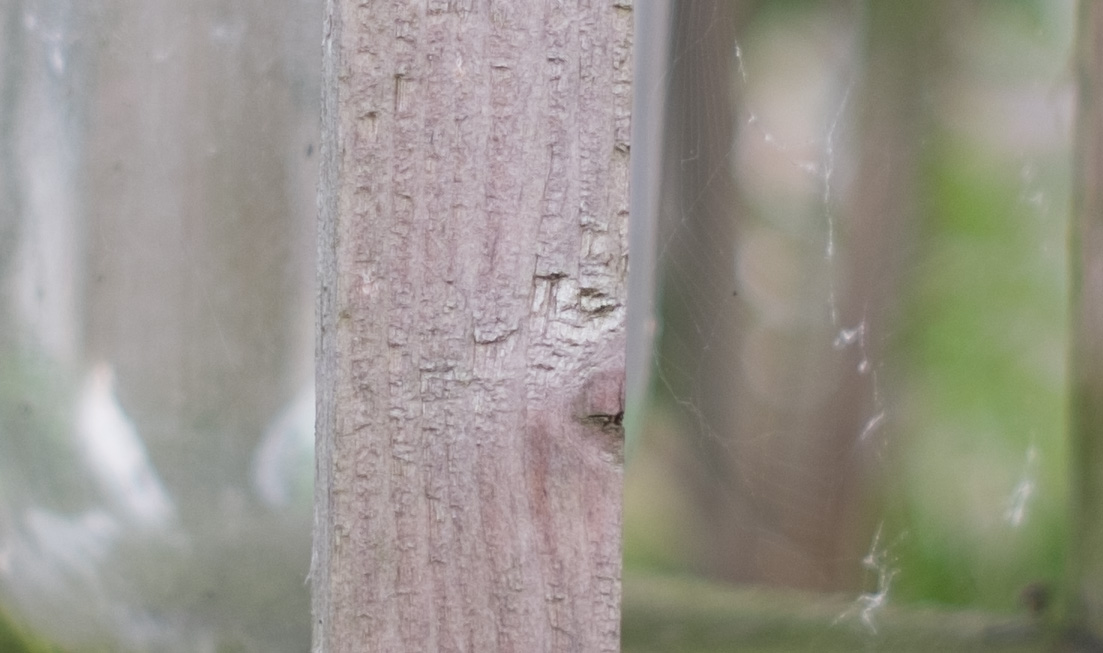

An interesting article. Thank you 🙂
Interesting I did perform about the same 1 to 1 comparison, but with an X-PRO1 + XF18mm (27mm) and an M9 equipped with an Elmarit 28mm. For many reasons, this is more fair comparison than you performed with the quite deviating 35mm (you should have taken an XF23mm, which isn’t there yet). The lenses I used share about the same focal length when recalculated with the crop factor, it is even very possible to extrapolate the aperture setting very well vs the DOF (a F2.8 should deliver on the Leica about the same DOF as the F2.0 on XF). No chance the M9 produced a better IQ, better color accuracy or even more ‘3D look’ as the X-Pro1, the Fuji remained superior on every trial I did perform. What I also want to mark up (and I keep on repeating this) – for the X-trans it is extremely important to look also at your RAW conversion engine in order to achieve the best results. I first compared both camera’s in LR I and tended to pull the same conclusion as you did, but in Aperture, a far better IQ is revealed from the X-trans sensor, less artifacts, better color accuracy,… and Iridient even seems to be a step beyond that. The X-series are amazing and after all I’m very glad I did never fall for the far too expensive and overhailed Leica’s, having in my eyes many problems to be reliable with both color and exposure settings. Certainly the M9. What I also found out certainly with wider apertures, AF is in most cases snap on the subject in the Fuji. Due to manual adjusting process in the Leica, photographers frequently miss that ‘snap on’, their focus is just a tad before/beyond where it should be. Another reason for me not to go for a range-finder. Rather a ‘not best in class but good enough’ AF than a missed opportunity…
Hummmm,
Did You read my review ?
My conclusion was I think very clear that the FujiFilm won on all points except on 3d look, and that’s not something that is NOT debit to the raw conversion but sensor size and techniques in the camera PLUS lens and were the lens is actually a very high factor.
The fun thing is that there will be a second part to this review, although slightly different where I tested the Leica R lenses on the FujiFilm X-E1 and also got a more 3D look than the Fujion lenses, although on detail and sharpness the Fujion lenses have a slight edge. But as mentioned that one will follow 😉
Lenses often have much more impact than people think in color and that 3D look.
So I think we are 100% on the same level 😉
One added remark, try capture one for raw conversion with the fujifilms and silky pix, although I don’t like silky pix that much.
Lightroom does a pretty good job in version 5.2 but silkypix and capture one are slightly better, so don’t worry I did the review the correct way 😉
I’ve done tests with LR, Silkypix, C1 and Aperture. Not Iridient. LR is the lowest in score for me, Aperture the best. But even in Aperture there is still room for some improvement. What I also expect to be coming, some day, seen the ongoing success of the X-series.
I tested raw converters a LOT with the x trans files…LR5/ACR was in last place. Iridient Developer (!!) & Capture1Pro7 were my favs. Aperture was pretty close too.
Capture one here, Silkypix I just can’t really work with to be honest.
Interesting points Frank. I have an R8 model here. This was when production was moved back to Germany. 3 lens combos for it, and it does all it should as a Leica… I’m not one for viewfinder models. I have an older leaf shutter Kodak back from the 50’s with incredible glass for roll film.. I’m happy you found a model that speaks well with you.
Best of luck in PSW… I only wish (more than anything..) I could go.
PSW rocks, so make sure to at least visit it once a year 😀
Enjoyed reading your review and look forward to part 2.
Having an unlimited budget, at least for me, is meaningless. You buy what works best for you.
When I made my switch from a dslr to something along the lines of a rangefinder, the Leica was the default option. With a dealer right down the street, I was able to handle it and shoot with it, though not live with it. I bought a Fuji X100. I was impressed by the IQ, the lightweight and the size. Not withstanding its initial issues, which Fuji addressed, it became one of my favorite cameras of all times.
The dslr was replaced with an XE-1. Again, a winner, though I did have to switch from Lightroom to Aperture for renders.
A Leica would have provided the utility I wanted with one body. Cost, including a few lenses, was not an issue. But the 2 Fuji’s are gems, at any price.
Why would the Leica be a 1 step solution and you need two FujiFilm s?
How did “need” enter the discussion? No one needs a camera other than pros.
I liked the size of the X100, it gave me some time to see if I could get used to my first evf, and it was an easy way to familiarize myself with my first Fuji before I committed to a system. Once the XE-1 came out it gave me a size I really liked and a system camera. By intro time I found myself using the evf on the X100 more than the ovf as I tend to shoot close. A concious process worked that out well, for me.
I could easily sell the X100 and lose no utility. However, its such a gem its the camera that hangs on my coat rack.
Its sort of odd in a sense. I’ve owned 8 cameras, other than some point and shoots, in 54 years of photography. GAS has never been a factor. I have the 18, 35 and 18-55. The zoom never gets used and will be replaced with the 14 once I return from a 3 month trip I’m on now. But the X100 will stay.
Clear
The x100 is a gem indeed and could function as wide camera while the x-e1 uses a longer lens.
I love the primes but with me the 18-55 is almost glued to the camera unless I need more light. It just gives me the option to very quickly switch from view.
But everyone shoots differently 😉 that’s the fun.
I don’t think this comparison is really valid because from what I read it basically boils down to the fact that you are more comfortable using the newer automated features of the XE-1. This really nothing more than an opinion piece and doesn’t offer much in hard facts.
You don’t state whether the lenses you used on the M9 were coded or if you had Lens Detection set to on. That could be the reason for the magenta (not red) color shift.
There’s nothing wrong with wanting to use AF or focus peaking. Or any of the other high-tech features if that’s your thing.
On the other hand, I had the X-Pro1 for awhile, which is pretty much the same as the XE-1 and had the opposite experience from you. I hated the Fuji. The only thing I found it better at was high ISO imaging. I find the Leica way easier to operate and I can focus faster than the Fuji at any given time and I had a much higher keeper rate with the Leica especially in low-light since the X-Pro1 and XE-1 are abysmal at focusing in the dark. What good is a camera that produces little noise at high ISOs if your images are blurry because the camera can’t focus accurately.
I guess I could write a comparison “article” like this, but in reality there’s no substance here and all I took away from this is that you didn’t like the Leica because it didn’t have the auto features you desired.
It depends on the person of course.
Fact is that the dynamic range is totally different from both cameras, noise the same.
If you read the review I think that would be clear…. also the price difference of course, I thought I was pretty complete 😀
In a book about classic cameras, Ivor Matanle (I think this is the author’s name, I am quoting from memory) says that you must make compromises when you design a lens; and Leica’s compromises were always different from Zeiss’ – I got the idea that the things Leica deliberately did not correct for were partly responsible for the 3D effect. I am not sure I am correctly quoting Matanle, and I do not know if modern designs (aspherical, computer-designed lenses) changed this. What you say about classic lenses suggests that there may be an element of truth in the thing.
I believe Leica designed to be sharp wide open and sacrificing some when closed down and Zeiss designed like most others.
But I could be wrong.
both cameras are great, but Fuji is a winner for me here (and I am not talking about the price difference) … good job 🙂
I guess it really depends on what you’re used to. For me it was the other way around: I am used to rangefinder focusing on the Leica M (various film bodies I have owned over the years and also the M8). When the Fuji X100 came out I was eager to try it ‘cos every website was promoting it as a sort of 21st Century compact Contax G or a Hexar. That is, a rangefinder with auto focusing.
I hated the Fuji X viewfinder experience.
When the X-Pro came out I gave Fuji another try but it was the same. I just couldn’t get over the obviously non-rangefinder “rangefinder experience”. Oddly enough, I liked the viewfinder in the X10, though.
That’s the fun thing, otherwise there only would be one camera for all 😀
Alex: First – I have had both cameras. If you have to ask which one to buy – you should just buy the Fuji. People do not but a Rolex because it is the best time keeper in the world ( same with a Bently). As to the comments about the “Rangefinder – there is no rangefinder because the electronics do not support one – either align the LEDs or hold it in front of you (with arms out) and use the “live view”!
I agree Fuji X-Pro and EX-1 are very interesting and good cameras but I am not sure they are better choice than the Leica M9. More reasonable choice – YES, but I am not sure common-sense and buying expensive cameras are the same thing… After all, there are plenty of 500$ dSLRs which are really good. I currently own a M9, M6 and a bunch of lenses and I am considering moving to Fuji, but before doing that I would do a long-term comparison. The Leica M9 is not a camera to begin with and is would not unravel its qualities for the short-term user. You have to use it a lot in order to focus it fast and use it properly, especially if you used an SLR before. I can focus it now as fast as my former Canon EOS camera and when I am in the street, I use scale focusing – this way it turns into a P&S – no adjustments are needed – just press the shutter..
Regarding the 3D, I think it is connected with the fact that the Leica lenses are very sharp when in focus, and very un-sharp in the un-focused zones – I think this is what make the 3D feel..
Great review Frank, but you should have tested the 35 1.4R on the X-E1 in stead of the lesser 18 one. The 35 1.4 really rocks, is tack sharp and creates that 3D look you’re after. Even the 18-55 is better than the 18 prime at the same focal length. Although I do not own and also did not have photographed with a Leica before, I agree with your findings that (taking the price difference into account) the M9 isn’t that much better. For the price difference only you could buy a couple of Leica lenses for the X-E1, which to me makes more sense than invest into an overpriced body with a rather spartan control and moderate white balance and noise performance.
I come from a dSLR (5D mark III) which has great performance as well, but to be honest, I have way more fun photographing with the X-E1 and I also dare to say that the image quality does not differ that much. Low light control and ISO performance looks a bit better on the Fuji, sharpness is the same (EF 16-35 II vs XF 18-50) with an clear advantage in the edges for the Fuji. The EFV is something to get used to (coming from an OVF), but it only took me one day and the big advantage is WYSIWYG (like using live view on the LCD). Exposure, contrast, color and white balance is easier to judge than through an OVF, although the latter is much clearer and more direct (EFV has some delay).
But I will keep my 5D mark III for serious business and harsh outdoor conditions (Iceland to be more precise) because it’s weather sealed and the Fuji unfortunately is not. But for everything else the Fuji is my little piece of gear which brings the most fun into photography for a reasonable price without a compromise on quality.
I’m now into adopting old manual lenses, FD 50 1.4 to start with, which performs great on the Fuji and also give me that old school analoge feeling from the beginning of my photo career. There are still beautiful old lenses that really come to life again, especially using the Metabones Speedbooster which will give you the original (almost) full frame look. A 50mm f/1.4 will become a 53mm f/1.4 in 35mm eq, so there will be no more cropfactor issues with FF lenses. You will get the same FOV/focal length and DOF. f/1.4 will be 1.4 on the cropped sensor, without any loss in quality. http://www.metabones.com/
One more thing Frank, the “brandslang” comparison is not a fair one, The Fuji is 18mm @ f/2 and the Leica is 35mm @ f/2. Hence there’s a difference in DOF 😉
The 18mm becomes a 27mm FF eq and the f/2 becomes a 2.8 compared to FF (in terms of DOF).
You should have chosen 23mm @ f/1.4 to get the same DOF and VOF as the Leica setup.
It is very clear to sea that there’s more DOF in the Fuji image, the red door is almost the same in size, but the buildings are further away, resulting in a different look and feel.
I know, it was not a LENS vs LENS comparison, or at least not intended.
More a system vs system.
And I only had it for one day.
the 35 rocks indeed, but the review was more of a system vs system. Don’t look for a lens vs lens review. they only had one lens for the Leica and I wanted something similar on the Fuji, that’s why this choice was made.
the leica glass pays off better at the pro end and it shows clearly for the trained eye. the results from leica are organic and pop-up more which the fuji nor any other small format manufacturer had crossed so far. the pro wants that organic effect which has colors and contrasts that pop-up to accentuate the realism of his projects, and he pays for it when he can, he is not a fool, nor leica are hypocrites to call for high price. non-leica colors/tonality/ light distribution/ bokeh are synthetic compared to Leica. concerning color tints in your 2nd test, the fuji has a cyano tint covering all the spectrum. the world looks more like the leica shot with naked eyes. Fuji and the rest can produce identical leica quality but they have to sell it three times more becz it takes three times more working time and requires clearer and more expensive glass crystals as raw material. i love leica but i can’t afford it. a professional camera should be tested by a professional photographer. Your test is like a race between a Golf GTI and a Porsche 911 Turbo but in manhattan at rush hour.
Short :
You never do it right for everyone.
Longer :
I tested both cameras on the street, and with all due respect if they were priced equal I would probably write a different kind of review, however with this price difference… let’s be real, I love Leica, I own a R4 which I love to use (and use very often), I use the Leica glass on my other cameras, and yeah I know you pay more, but the digital Leicas….. well I find them very overpriced to be honest for what they deliver.
On difference in look, you are 100% right, that’s why I shoot MF and use different lenses on my digital SLRs, but again it’s a matter of pricing. A minolta lens is a lens I prefer above a modern day Canon for the simple reason I love the colors a bit more, but they are about equal in price (or much cheaper when bought second hand without the Zeiss logo), with Leica however I strongly have the feeling that everything is just added to “it’s special, so we have to use it this way”, I’m a person that will shoot with a camera because it works fine and the image quality is great, I’m willing to pay more of course, but not a LOT.
The FujiFilm cameras are the cameras that come closest to the real Film look that I know without digital “look/feel” depending on the lens you use. The Sony A7r however is in my opinion THE Leica killer, no AA, FF, 36MP with a sick dynamic range and great colors, and…. it takes the Leica lenses (although some lenses experiences slight problems).
I don’t say that Leica is bad, or a broken system, in the review I just wanted the two next to each other. If I had to buy a camera now and had to choose it would without any doubt be the FujiFilm between these two, and if I can add a third it would also be the A7r. But if you want that “film look” it’s the Fujifilm.
No offence but the Leica lovers have a fixed view of the photographic world which allows for no alternative to their beloved brand and the only point I would make regarding this comparisom is that for somebody who really wants a Leica the Fuji X-E1 will never fit the bill.
On the other hand I switched across from an Olympus Pen E-P3 and the Fuji X-E1 is simply a fabulous step up in all round quality and usability. It’s not perfect but as a real world proposition it handles my needs perfectly .
Sometimes people are blind for other brands, I always say that as soon as I find something that gives me a better experience, more shots and better image quality I switch in a heart beat, that’s why I will never sign a contract with a brand.
Great post. Thank you. Just one thing, my eyes really hurt after reading the whole post… a black background is not the best choice for blogging.
It depends also on the browser, we found out that Chrome doesn’t look right at all, while Safari looks fine and easy.
We are thinking about it, but I love the way my images look on black.